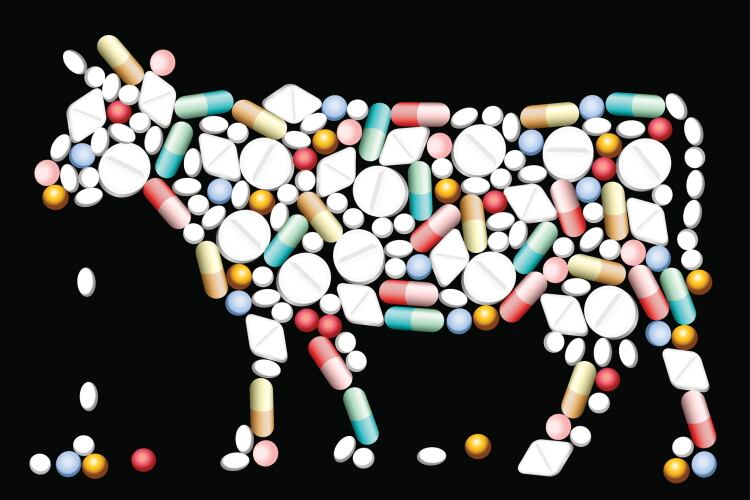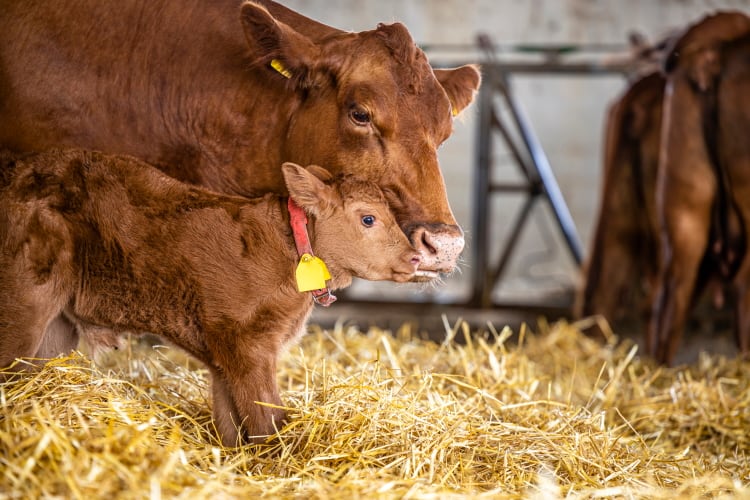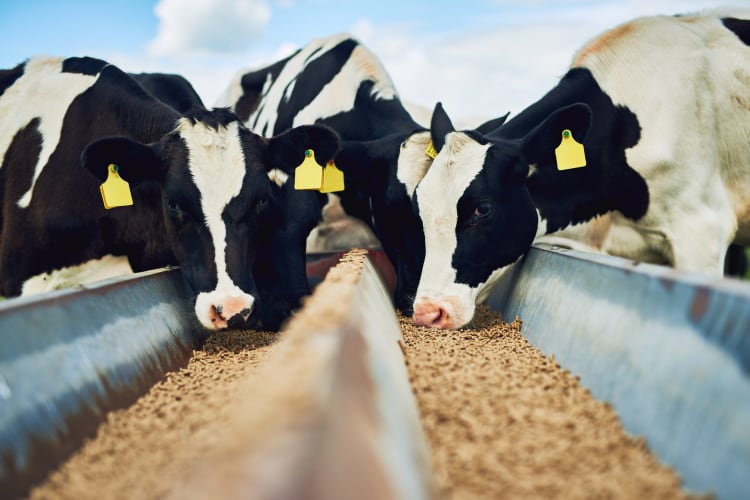Dairy farmers are some of the most responsible when it comes to antibiotic use in cattle, according to the latest Targets Task Force 2 report from the Responsible Use of Medicine in Agriculture Alliance (RUMA). The report also showed that data-gathering needs to increase over the next few years to meet the target of capturing data from 95% of dairy herds by 2024.
In dairy, antibiotics are used to treat bacterial diseases, such as mastitis. The Veterinary Medicines Directorate (VMD), an executive agency sponsored by the UK’s Department for Environment, Food and Rural Affairs, has access to the overall antibiotics sales data, but sector-specific data is needed to gain insight into sector-specific usage.
In the ruminant sector, the Medicine Hub, developed by AHDB, is the tool to achieve this. Launched last year, the most recent dataset available for dairy is based on 1,132 submissions. Whilst limited, the trend identified through the data is that antibiotics use levels are low. The most recent RUMA TTF report states that injectable HP-CIA products licensed for use in cattle were 0.24mg.kg in 2021 - an 18% reduction since 2020 – and there has been a 0.86 mg.kg (78%) fall since 2014.
This year’s data meanwhile is expected to become available at the end of the year, though AHDB says that ‘progress looks encouraging’. “The target has been to double uploads each calendar year, and this has happened 2020/21 and we anticipate that, as more processors and retailers encourage their suppliers to allow their data to be shared, the rate of upload will significantly increase,” a spokesperson told us.
Who owns the data, and how to share it
Whilst antibiotics use data belongs to the farmer, veterinarians are considered ‘the guardians of antibiotic use’ and often have practice management systems to capture usage. “Currently, there are a number of mechanisms that allow both vets and farmers to upload data,” the AHDB spokesperson said. “The most popular method is for it to come from vet practice management software or bulk data holder software, where it is already stored. There is a variety of mechanisms, and the data uploader will select which is best given the system they operate within their own business.”
“As practitioners, vets must legally hold records of antibiotics dispensed to farm. By using this as the source for data upload to Medicine Hub, it is automatically an accurate picture of what has been sold and used.” - AHDB
Before this is done, the farmer needs to permit the submission of data into Medicine Hub. “By farmers giving permission to their vets to upload data on their behalf, there will be a number of benefits - vets will regularly review what is being used on their farms and be able to monitor changes and trends both on individual farms and between farms on which they work. This has been a powerful driver for responsible antibiotic use in pigs, for example.
“Often, vet practices have the data captured anyway and it will save the farmer from having to enter the data. It is also robust and can be reported in a timely manner.”
The actual ‘giving of permission’ is not so much a hurdle but a piece of account admin, we were told. If the data collection is done through vet practice software for example, farmers can simply register an account with their practice and be prompted via email whether they agree to share their data.
“Dairy farmers understand that sharing their data with Medicine Hub helps provide evidence to demonstrate the sector’s responsible approach to using antibiotics,” the spokesperson added. “Once discussed or explained, farmers understand the reasons for requesting it, and the vast majority have no issue doing so.”
Consumer concerns
While the results for dairy are encouraging, it is unclear if UK consumers are aware of them. In the US where antibiotics use in cattle is up to 16 times higher, public perceptions around antibiotic use on dairy farms has indicated that consumers would be willing to pay a premium for products from animals that had been raised without antibiotics – and would be leery of self- and third-party verifications schemes for milk1.
The AHDB spokesperson we contacted agreed that ‘it is probably true that some consumers may be unaware of the low levels of antibiotics used on-farm in the UK’. They added: “All milk buyers, processors and retailers have been working and are continuing to work alongside Medicine Hub to speed the rate of data upload in a hassle-free and efficient, effective way.”
1Public perceptions of antibiotic use on dairy farms in the United States
Published: 14 January 2021, Journal of Dairy Science
https://doi.org/10.3168/jds.2019-17673




